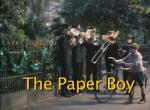
 Winners
Network Ten
(publisher),
Australia
:
Network Ten
Australian Children's Television Foundation
,
1985
Z1676442
1985
series - publisher
film/TV
children's
Winners
Network Ten
(publisher),
Australia
:
Network Ten
Australian Children's Television Foundation
,
1985
Z1676442
1985
series - publisher
film/TV
children's
Australian Screen says of Winners that it is 'an anthology series of eight telemovies for children aged between eight and fifteen. No one story is typical. Through comedy, science fiction, historical drama, adventure, fantasy and social realism, many issues are raised. Each of the Winners stories is about children, their families and friends. Common themes across the stories are family relationships, friendship, individuality, and the facing of difficult situations with courage, ingenuity and independence.'
Of the origins of the series, Patricia Edgar says in her memoir Bloodbath: A Memoir of Australian Television (Melbourne: Melbourne UP, 2006):
The series was initially dubbed Masterpiece Theatre, an ironic salute to Phillips Adams' comment at the very first board meeting that we must use popular formats and not look like Masterpiece Theatre. It would eventually air under the title Winners, a title that I selected from a list of ideas during scripting.
I approached a number of experienced producers around the country to induce them to work on a children's program. With guidance from John Morris, I identified twenty of Australia's top writers--including John Duigan, Tom Hegarty, Sonia Borg, Anne Brooksbank, Tony Morphett, Morris Gleitzman, Bob Ellis and Cliff Green--and invited them to a briefing at the Sebel Townhouse in Sydney in February 1983. The way to get their involvement was to make the project high profile and competitivel the media would be involved throughout the process.
Writing is a solitary experience. These selected writers had never been together for a briefing before. The proposal was for each writer to develop two ideas for the sum of $500. If their idea was selected they would go on to the next stage and write a treatment and draft, otherwise we would give their idea back to them. Without exception, the idea appealed. The writers were not instructed on specific program ideas, but I made it clear I did not want bland adventure or syrupy formulaic family shows. I wanted the kind of drama children had not seen before--contemporary, challenging, dealing with important, relevant issue. I wanted stories that would add some meaning to children's lives. If these writers--the cream of the crop--could not deliver, nobody else in Australia could. (pp.155-56)
Edgar said of the series that 'Winners had been a baptism of fire--introducing me to a diverse range of producers, directors, styles of production and problems--as well as a wonderfully exciting introduction to the creation of drama, from an idea on paper to a powerful experience to be shared on screen' (pp.169-70).